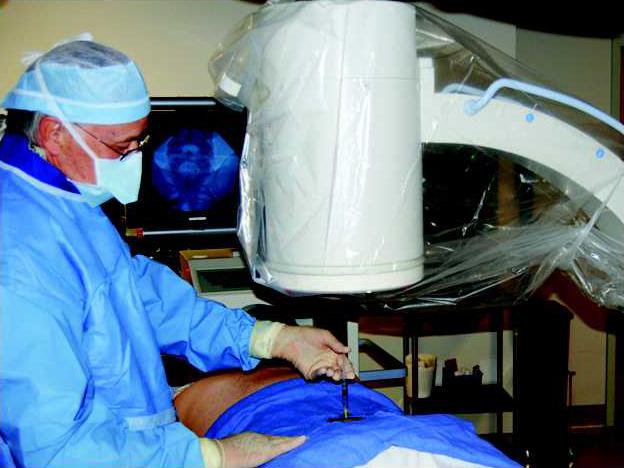Dick Meitler thought it might just be a “Band-Aid approach” but as the pain worsened, he was willing to give it a try – especially because he didn’t like all the talk about possible surgery.
Today, the Great Bend man is living pain free and his neck is working like it is supposed to.
Meitler sought pain-management treatment at St. Rose Ambulatory & Surgery Center and the results have been “remarkable, amazing.” His treatment involved one epidural injection and three trigger-point injections over a couple of months.
“After the second trigger point, I debated whether or not to go back,” Meitler acknowledged. “I wasn’t sure I needed another but there was still a little pain. I’m glad I went back.”
Since Meitler has worked as a crane operator for many years, the pain was most likely work-related. “I have spent all these years looking way back and way up,” he said. “I can stand quite a bit of pain but not like what I had.”
Meitler commended Thomas Miller, St. Rose certified registered nurse anesthetist, who has 33 years experience.
“He had as much knowledge as anybody,” Meitler said, noting his doctor referred him to St. Rose. “Thomas knew what to do and he did it right. I hope other people consider pain management. I can’t say it will work for everybody but it worked for me.”
Miller noted that pain-management access at St. Rose is designed for any patient, under the care of a physician, who has acute or chronic pain. The duration of pain relief varies from patient to patient.
“The pain could be the result of disease, a medical condition, an accident – anything,” Miller said. “It could be multi-faceted.”
Examples include low back pain, fibromyalgia, migraine headaches and myofascial or referred pain.
“Anyone can be a candidate for pain management services at St. Rose,” Miller said. “The physician evaluates and diagnoses, and then refers the patient to us for treatment.”
Procedures include epidural steroid injections, myofascial trigger point injections and/or nerve blocks. The anesthetist doesn’t prescribe pain medication; that is the physician’s decision.
“The proper treatment can be the first step to managing pain,” Miller said. “Once patients are aware of the possibilities, they might ask their doctors about it. And there is quick access at St. Rose – within a few days.
“The idea behind pain management is to treat the disease process, not the symptom,” Miller emphasized. “The symptoms drive people to come here but we need to find the origin of the pain.”
For example, he said, a trigger point might be arm pain but the patient may not realize its origins are in the neck, shoulder or back. Or if there is back pain, the patient may think it is a ruptured disk but it could be a joint in the hip.
The anesthetist also noted that he or his colleague, Richard Watenpaugh, have the patient’s history before they do anything. For instance, they will review the medical background, including recent physical therapy sessions and diagnostic scans associated with the pain.
“We have this history and know exactly where we are placing the drug,” Miller explained. “We use diagnostic tools to guide us.
“Any discomfort during a procedure is managed,” he added. “And it may take a few days after the injections to start getting relief.”
Patient finds relief with pain management services





